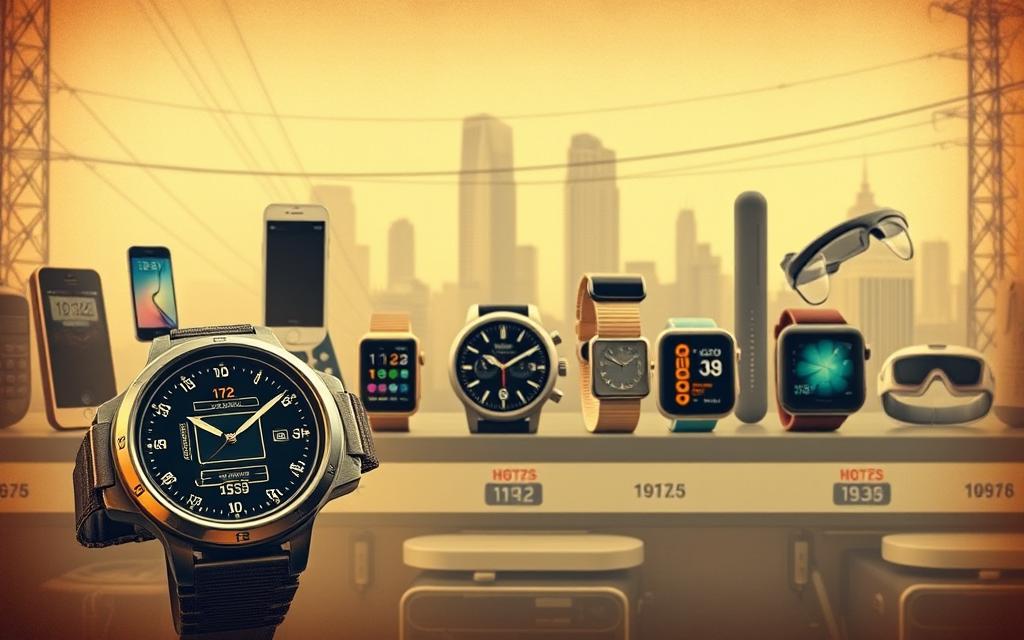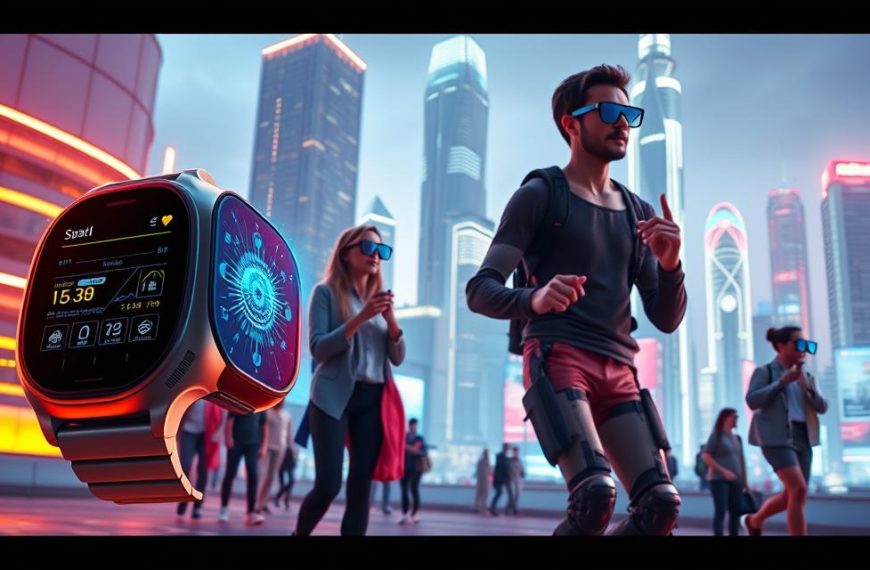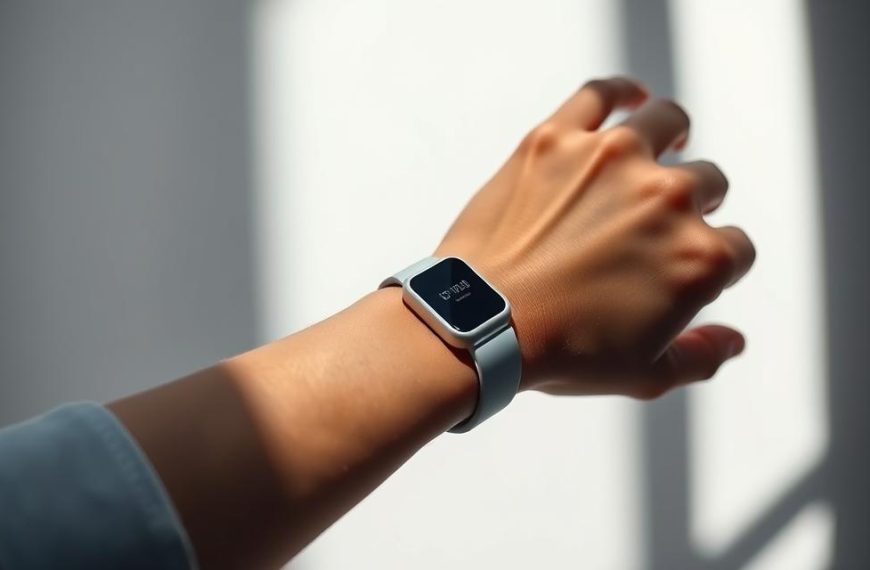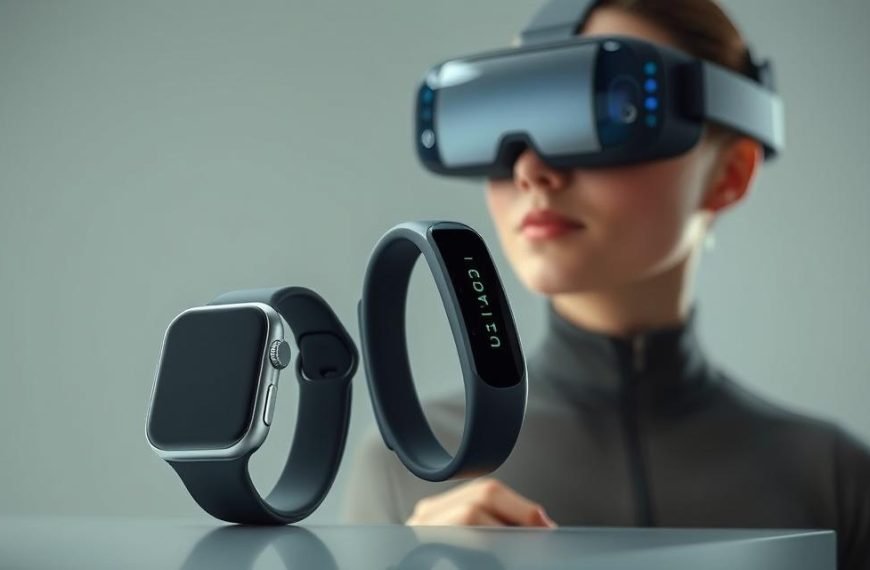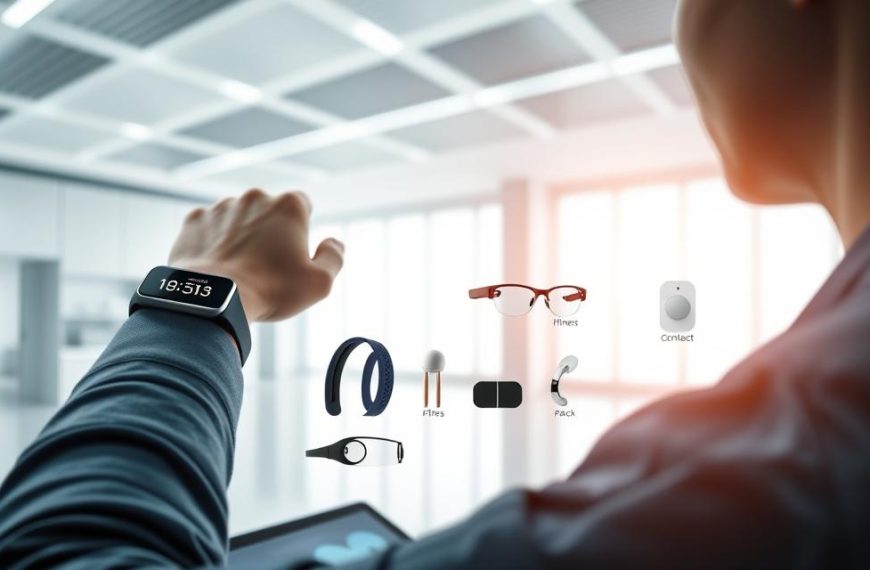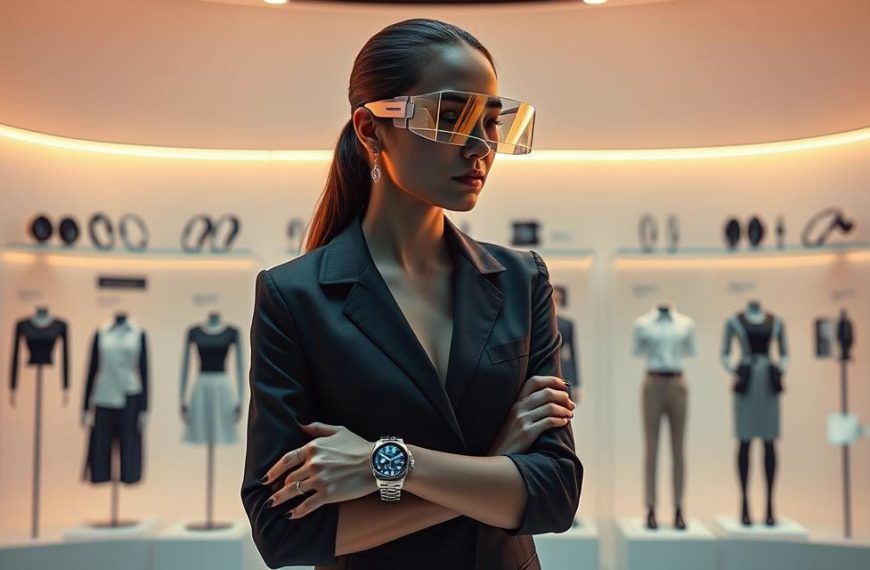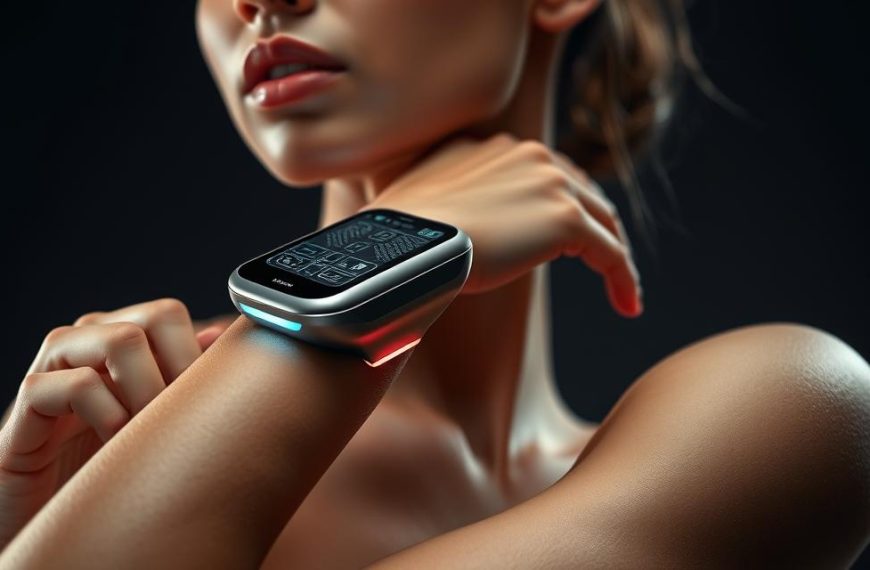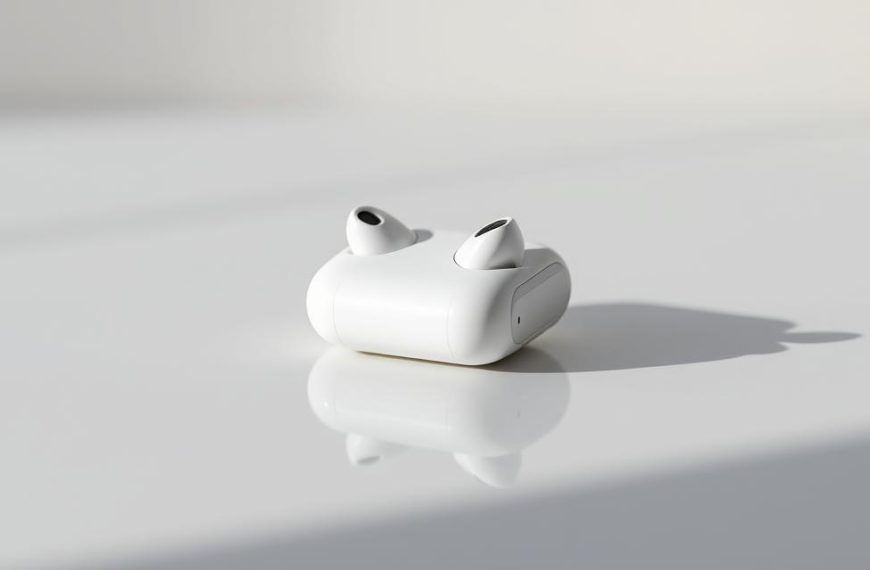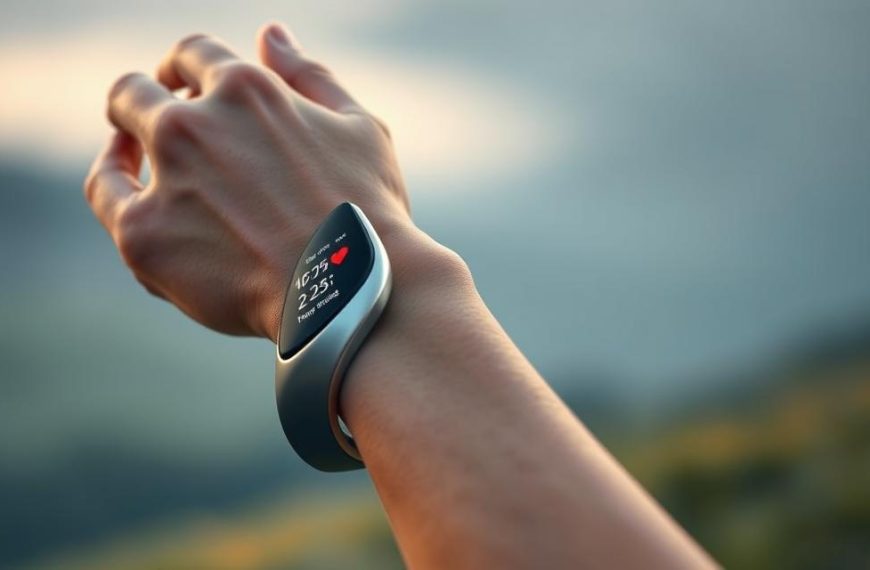Wearable devices have come a long way since their early beginnings. The first known example dates back to 1961, with a shoe-mounted roulette predictor. This marked the start of a journey that would redefine how users interact with technology.
Over time, the definition of wearables evolved. Modern devices now include electronics and computing capabilities, making them more than just accessories. From the 13th-century invention of glasses to the 16th-century creation of watches, these precursors laid the groundwork for today’s innovations.
The shift from analog to digital devices began in the 1950s. Sony’s transistor radio in 1955 was a key milestone, showcasing the potential of portable devices. Today, products like the Apple Watch and Fitbit dominate the market, blending style with functionality.
Wearables now play a crucial role in health and lifestyle. They track fitness, monitor vital signs, and connect users to a smarter way of living. With a projected market growth of 20% annually, these devices are shaping the future of personal tech.
Introduction to Wearable Technology
The wearable devices market is booming, expected to hit $150B by 2028. These gadgets are no longer just accessories; they’re essential tools for modern living. Today’s wearables meet strict criteria: they include electronics, computing capabilities, and must maintain physical contact with the body.
Unlike portable devices like smartphones, wearables are designed to be worn. They integrate seamlessly into daily life, offering convenience and functionality. The market is divided into two main segments: consumer devices and medical-grade equipment.
Key components of these devices include microprocessors, biometric sensors, and IoT connectivity. These features enable wearables to collect and analyze data, providing users with actionable insights. The COVID-19 pandemic accelerated the adoption of health monitoring devices, making them more popular than ever.
Emerging categories are pushing boundaries. Augmented reality glasses, hearables, and epidermal sensors are redefining what’s possible. Even clothing is getting smarter, with embedded electronics transforming everyday apparel into high-tech gear.
One notable example is the FDA-approved Apple AirPods, which now serve as hearing aids. This innovation highlights the growing intersection of wearables and healthcare. As these devices evolve, they continue to shape the future of personal tech.
How Did Wearable Technology Start?
The roots of wearable devices trace back to inventive solutions for everyday problems. Early innovations laid the foundation for the advanced tech we use today. From rudimentary gadgets to sophisticated tools, the history of these devices is a fascinating journey.
The First Wearable Devices
In 1961, the first modern wearable emerged—a shoe-mounted roulette predictor. This clever device marked the beginning of a new era. It showcased the potential of integrating devices into everyday life.
Sony’s 1955 transistor radio prototype was another milestone. It became a blueprint for portable tech, influencing future designs. This innovation demonstrated how devices could be both functional and compact.
By the 1970s, wrist-worn gadgets gained popularity. The Pulsar Calculator Watch, launched in 1975, was a luxury item priced at $3,950. It symbolized the fusion of style and functionality. In contrast, Hewlett Packard’s HP-01, released in 1977, was more affordable and sold 20,000 units.
The Role of Sony and Hewlett Packard
Sony and Hewlett Packard played pivotal roles in shaping the market. Sony’s Walkman, introduced in the 1980s, revolutionized music consumption. It became a cultural icon, influencing how people interacted with portable devices.
Hewlett Packard’s HP-01 was a game-changer in wrist-worn tech. It combined a calculator with a watch, making it a practical tool for professionals. This innovation helped popularize wrist-worn devices.
In 1987, digital hearing aids marked another breakthrough. They demonstrated how wearable devices could improve quality of life. This era also saw the rise of calculator watches, which became a symbol of futuristic tech.
| Device | Year | Price | Impact |
|---|---|---|---|
| Pulsar Calculator Watch | 1975 | $3,950 | Luxury symbol |
| HP-01 Calculator Watch | 1977 | $650-$850 | Mass market success |
Pop culture also played a role in popularizing these devices. Marty McFly’s Casio watches in the “Back to the Future” films showcased the appeal of futuristic wrist-worn tech. These moments cemented the idea of wearable devices as both practical and stylish.
The Evolution of Wearable Technology
The journey of wearable devices has transformed personal tech in remarkable ways. From simple gadgets to advanced tools, these devices have reshaped how we interact with the world. Today, they are more than just accessories; they are essential for modern living.
The Rise of Smartwatches
Smartwatches have become a cornerstone of the wearable market. The launch of the Apple Watch in 2015 marked a turning point. It combined style with functionality, offering features like health monitoring and app integration.
Other brands quickly followed suit. Samsung’s Galaxy Watch introduced advanced health tracking, including heart rate and sleep analysis. These devices have become a way to stay connected while on the go.
The Introduction of Fitness Trackers
Fitness trackers have revolutionized how we monitor our body. Fitbit, launched in 2009, played a key role in mainstreaming these devices. With over 100 million units sold, it has become a household name.
Modern trackers go beyond counting steps. They now include GPS, heart rate monitors, and even temperature sensors. This evolution has made them indispensable for fitness enthusiasts.
| Device | Year | Key Feature |
|---|---|---|
| Fitbit Tracker | 2009 | Step counting |
| Apple Watch | 2015 | Health monitoring |
| Samsung Galaxy Watch | 2018 | Advanced biometrics |
The wearable market continues to grow, with innovations like smart glasses and advanced sensors. These devices are not just tools; they are a way to enhance our daily lives. For more insights, explore the evolution of wearable tech in health and.
Wearable Technology in Healthcare
The integration of advanced devices into healthcare has revolutionized patient care. These tools provide real-time insights into health metrics, enabling better management of chronic conditions and preventive care. From early innovations to modern solutions, wearables have become indispensable in medical settings.
Early Medical Wearables
The first wearable pacemaker, introduced in 1958, marked a significant milestone. This device provided life-saving support for patients with heart conditions. It laid the foundation for future innovations in medical wearables.
In the 1970s, wearable monitoring devices began to emerge. These early tools focused on tracking vital signs like heart rate and blood pressure. They were bulky but effective, offering a glimpse into the potential of portable medical tech.
Modern Health Monitoring Devices
Today’s devices are sleek, powerful, and FDA-approved. The Apple Watch, for example, includes an ECG feature that detects irregular heart rate patterns. This innovation has empowered users to take control of their health.
QardioArm is another standout device. It helps manage hypertension by providing accurate blood pressure readings. Continuous glucose monitors, like Dexcom G7, track sugar levels in real time, offering critical data for diabetes management.
Smart contact lenses are pushing boundaries further. They detect glaucoma by measuring intraocular pressure. Epidermal sensors, such as the e-skin patch from Terasaki Institute, monitor muscle signals for advanced diagnostics.
| Device | Function | Impact |
|---|---|---|
| Apple Watch ECG | Heart rate monitoring | FDA-cleared for arrhythmia detection |
| QardioArm | Blood pressure tracking | Hypertension management |
| Dexcom G7 | Glucose monitoring | Real-time diabetes care |
Mental health wearables, like Embrace2, are also gaining traction. They detect seizures in epilepsy patients, providing timely alerts. These devices are transforming how we approach healthcare, making it more personalized and proactive.
The Impact of Wearable Technology on Society
From fitness to entertainment, these devices are transforming daily routines and experiences. They have become integral to how individuals engage with the world, offering new ways to stay active, entertained, and connected.
Wearables in Fitness and Sports
Fitness trackers like Fitbit have revolutionized how people monitor their health. Features like step counting, heart rate tracking, and sleep analysis empower users to take control of their fitness goals. Social challenges on these platforms encourage friendly competition, making workouts more engaging.
Professional athletes are also benefiting from advanced devices. WHOOP, for example, is widely adopted in the sports industry. It provides detailed insights into recovery and performance, helping athletes optimize their training. NFL teams use Zebra Technologies to track player movements, enhancing game strategies and player safety.
Wearables in Entertainment and Gaming
The gaming world has embraced reality-based devices. Pokémon Go’s 2016 AR phenomenon showcased the potential of augmented reality in entertainment. Today, devices like Meta Quest 2 offer immersive experiences, blending virtual worlds with physical movement.
VR fitness apps like Supernatural combine exercise with interactive gameplay, making workouts fun and effective. Sony’s PlayStation VR2 is pushing boundaries with its advanced specifications, offering gamers a new way to experience their favorite titles. AR glasses are also enhancing live events, providing real-time information and interactive features.
From smart jerseys with biometric tracking to virtual cycling competitions on Zwift, wearables are redefining entertainment. These innovations are not just about fun; they are shaping the future of how we play and engage with music, games, and events.
Challenges and Criticisms of Wearable Technology
Despite their advancements, wearable devices face significant challenges that impact their adoption and effectiveness. From privacy concerns to accessibility issues, these hurdles highlight areas for improvement in the market.
Privacy and Security Risks
One of the most pressing challenges is the vulnerability of these devices to hacking. A 2023 study revealed that 78% of wearables are at risk of data breaches. Medical devices, in particular, store sensitive health information, making them prime targets for cyberattacks.
Apple Watch and Fitbit have faced scrutiny over their data collection practices. While these devices offer valuable insights, they also raise concerns about how individuals‘ personal information is stored and shared. The need for robust encryption and transparent policies is more critical than ever.
High Costs and Accessibility
Another major issue is the high costs associated with these devices. The Apple Watch, for example, starts at $399, putting it out of reach for many consumers. Subscription models, like Fitbit Premium and Oura Ring, add ongoing expenses, further limiting accessibility.
Developing nations face even greater barriers. While luxury brands like WHOOP dominate the market, budget options like Xiaomi bands struggle to meet the same standards. This disparity highlights the need for affordable, high-quality alternatives.
- Data breach risks in medical wearables
- Apple Watch’s $399+ price barrier
- Criticism of subscription models like Fitbit Premium
- Durability issues in smart clothing
- Ethical concerns over worker surveillance
- Lawsuits over ECG accuracy
- Access challenges in developing nations
- Contrast between luxury WHOOP and budget Xiaomi bands
The Future of Wearable Technology
The next wave of innovation in personal devices is set to redefine how we interact with the world. Emerging technologies are pushing boundaries, blending functionality with sustainability. From advanced sensors to self-charging systems, the possibilities are endless.
Emerging Technologies
Neuralink’s brain-computer interface trials are paving the way for seamless human-machine interaction. This breakthrough could revolutionize how we process information and control devices. Similarly, Samsung’s stretchable skin display offers a glimpse into flexible, adaptable screens that conform to the body.
Graphene-based sensors are another exciting development. These ultra-thin, flexible materials can monitor vital signs with unparalleled accuracy. Meta’s neural wristband, currently in development, aims to interpret hand gestures for enhanced virtual reality experiences.
AR contact lens prototypes are also on the horizon. These lenses promise to overlay digital information onto the real world, creating immersive experiences. Biodegradable sensor materials are being explored to reduce environmental impact, aligning with global sustainability goals.
Energy Harvesting and Sustainability
Energy-efficient solutions are at the forefront of future technologies. MIT’s piezoelectric shoe insoles convert kinetic energy into electricity, powering devices with every step. Solar-powered smart clothing is another innovation, integrating photovoltaic cells into fabrics for continuous energy generation.
Self-charging kinetic energy watches are gaining traction. These devices harness movement to power themselves, eliminating the need for frequent charging. Such advancements not only enhance convenience but also reduce reliance on traditional energy sources.
By 2030, smart clothing adoption is expected to reach new levels. These garments will feature embedded electronics, offering real-time health monitoring and connectivity. The focus on sustainability ensures that these innovations are both functional and eco-friendly.
| Innovation | Key Feature | Impact |
|---|---|---|
| Neuralink Brain-Computer Interface | Seamless human-machine interaction | Revolutionizes information processing |
| MIT Piezoelectric Shoe Insoles | Kinetic energy harvesting | Self-powered devices |
| Solar-Powered Smart Clothing | Integrated photovoltaic cells | Continuous energy generation |
Conclusion
Over the past seven decades, personal devices have evolved from simple tools to advanced innovations. From early calculator watches to today’s smartwatches, the history of these gadgets reflects a remarkable journey of progress. Their impact on healthcare is particularly transformative, with 45% of US hospitals now using remote monitoring to enhance patient care.
As we look to the future, smart clothing and sustainable manufacturing trends are set to redefine the way we interact with tech. However, balancing innovation with privacy concerns remains critical. Ensuring equitable access and responsible data practices will be key to unlocking the full potential of these devices.
With global users expected to reach 1.1 billion by 2028, wearable technology is poised to drive the next wave of IoT growth. These innovations are not just tools—they are shaping a smarter, healthier, and more connected world.

